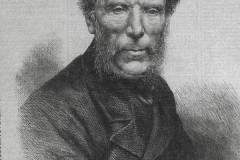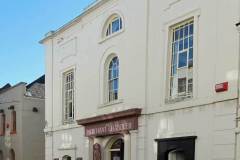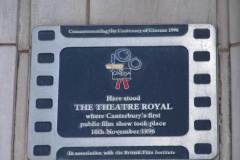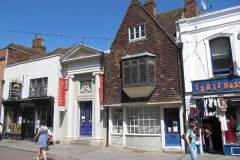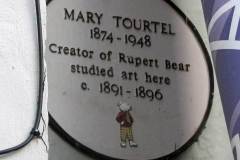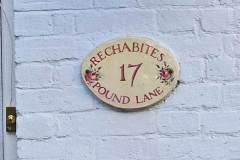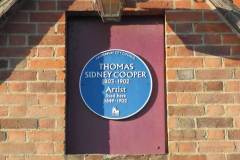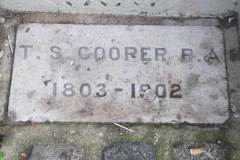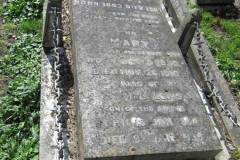Landscape Painter & Local Benefactor
Thomas Sidney Cooper (image 1) was born in St Peter’s Street, Canterbury, on 26 September 1803. His baptism later that year records simply ‘Thomas Cooper’ – the Sidney was added in later years. His family background was relatively poor. Father William worked as a surveyor for the military, but left his wife Sarah in 1808 ‘influenced by some blind infatuation’ never to return. This left Sarah, described variously as dressmaker and upholsterer, to bring up five children as best she could. Thomas attended the National School, and his flair for drawing was obvious from early years. Archbishop Manners Sutton found him sketching in the cathedral precincts and, when asked by Thomas for help in sharpening his pencil, gave £5 for the drawing by way of encouragement. Thomas’ first job after basic schooling was as a coach painter. He continued drawing local scenes, and in 1818 became a scenery painter at the theatre in Orange Street (image 2). With some help from an uncle, Thomas won a place at the Royal Academy Schools in London in 1824. He started this course but never completed it. After showing great promise, he fell out with his uncle and returned to Canterbury to resume his coach painting career, teaching drawing to private families in the surrounding area. In 1824 he took a step that would change his life – he left Canterbury to seek work in Brussels. Here, he was befriended by the renowned animal painter Eugene Verboeckhoven, and gained a proficiency in this field that was to become a defining focus for the remainder of his career. He married (1829) Charlotte Pearson, who lived in the city with her English mathematician father. When revolution broke out in Brussels (1830) Thomas and Charlotte returned to England with their first born child (Maria Charlotte) and set up home in London. Three further children followed, and during the 1830s Thomas enjoyed growing acclaim from art critics, and met Robert Vernon who became his major patron. But in 1838 Charlotte was seriously burned in an accident involving turpentine near their fire, and suffered prolonged lung problems before her death in 1842. Thomas’ standing as an animal artist continued to grow, to the point where, in 1848, he was summoned to paint for Queen Victoria. (She later bestowed on him the medal of the Royal Victorian Order.) The following year, 1849, by now a wealthy man, Thomas returned to his native Canterbury, where he stayed for the remaining 54 years of his life. He first had an impressive new home built in Harbledown, and named it Vernon Holme after his patron. His second marriage, to Mary the daughter of local miller William Cannon (not Cameron as Thomas wrote in his autobiography, now copied erroneously into the ODNB entry), took place in 1863. Other local associations include:
- In 1860 Thomas funded the foundation of a new theatre, Theatre Royal, in Guildhall Street (image 3), now part of Debenhams
- In 1868 Thomas purchased property adjacent to his mother’s house in St Peter’s Street, to create the Sidney Cooper Gallery of Art – now the Sidney Cooper Gallery and part of Canterbury Christ Church University (image 4). One of his students here was Mary Tourtel, of later Rupert Bear fame (image 5).
- Thomas purchased Abbot’s Mill, together with Dean’s Mill and the Rechabites Hall (Rechabites were a temperance movement allied to the Methodists) (image 6) in Pound Lane from his father-in-law in 1877. This was a philanthropic act to give financial help to William Cannon’s family after William’s death the previous year.
- Thomas is commemorated in a blue plaque on Vernon Holme (image 7), and also in one of the Cozens paving stones, laid outside the Cooper Gallery (image 8)
- He is buried, together with his second wife and his son by her (called Nevill) in the burial ground of St Martin’s church (image 9)
- Finally, other family members succeeded in their own fields: his brother William was twice mayor of the city, and his son Thomas George Cooper enjoyed some success as a painter, although dealers were keen to disguise his signature on paintings as that of his father, to increase their values.
Sources: Oxford Dictionary of National Biography (but see above regarding an error); Stewart (1983); Illustrated London News 6 July 1867; Times obituary 8 February 1902
Related CHAS Notebook pages give further detail on Cooper’s art and the Cooper Gallery.
DL

